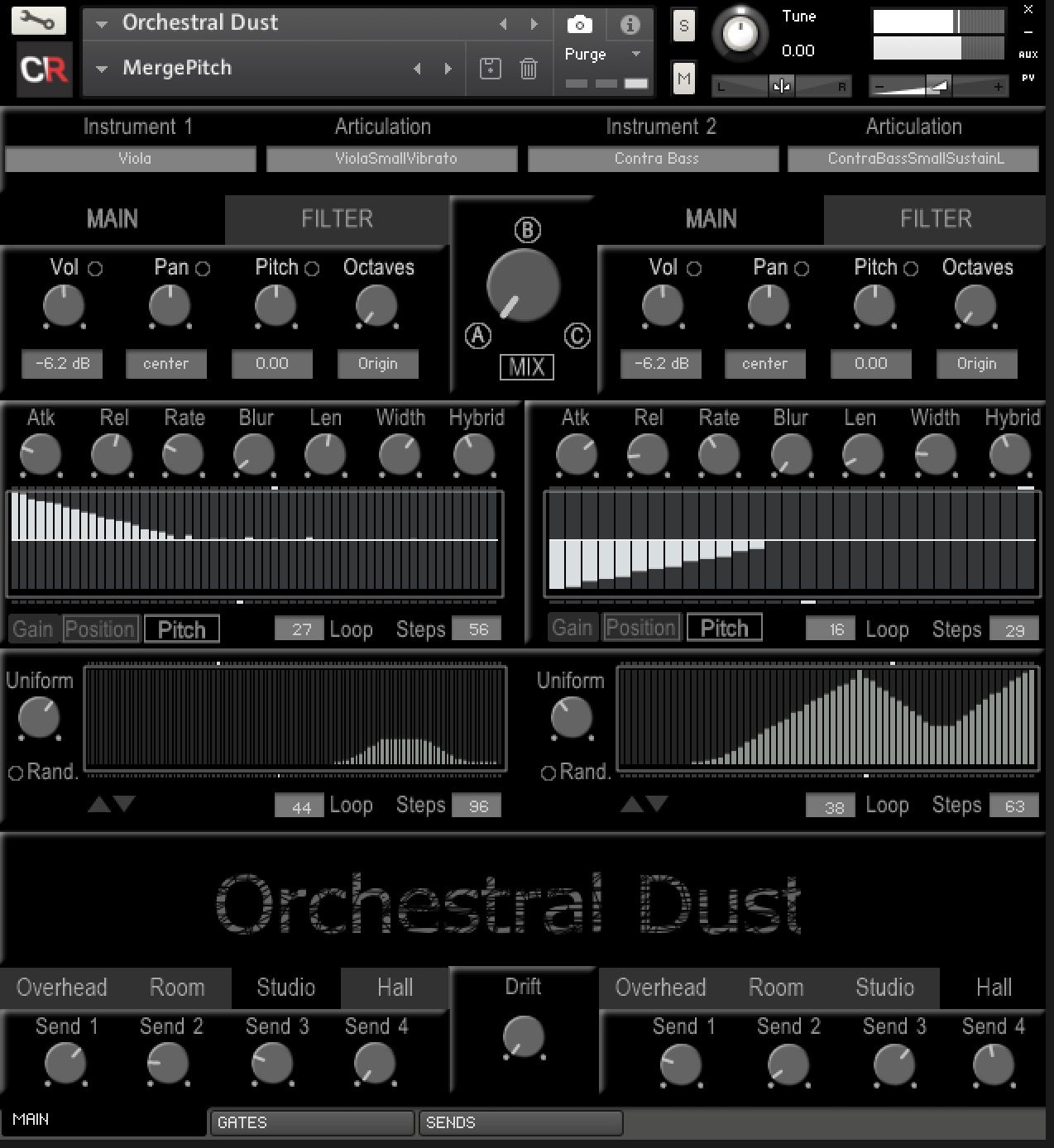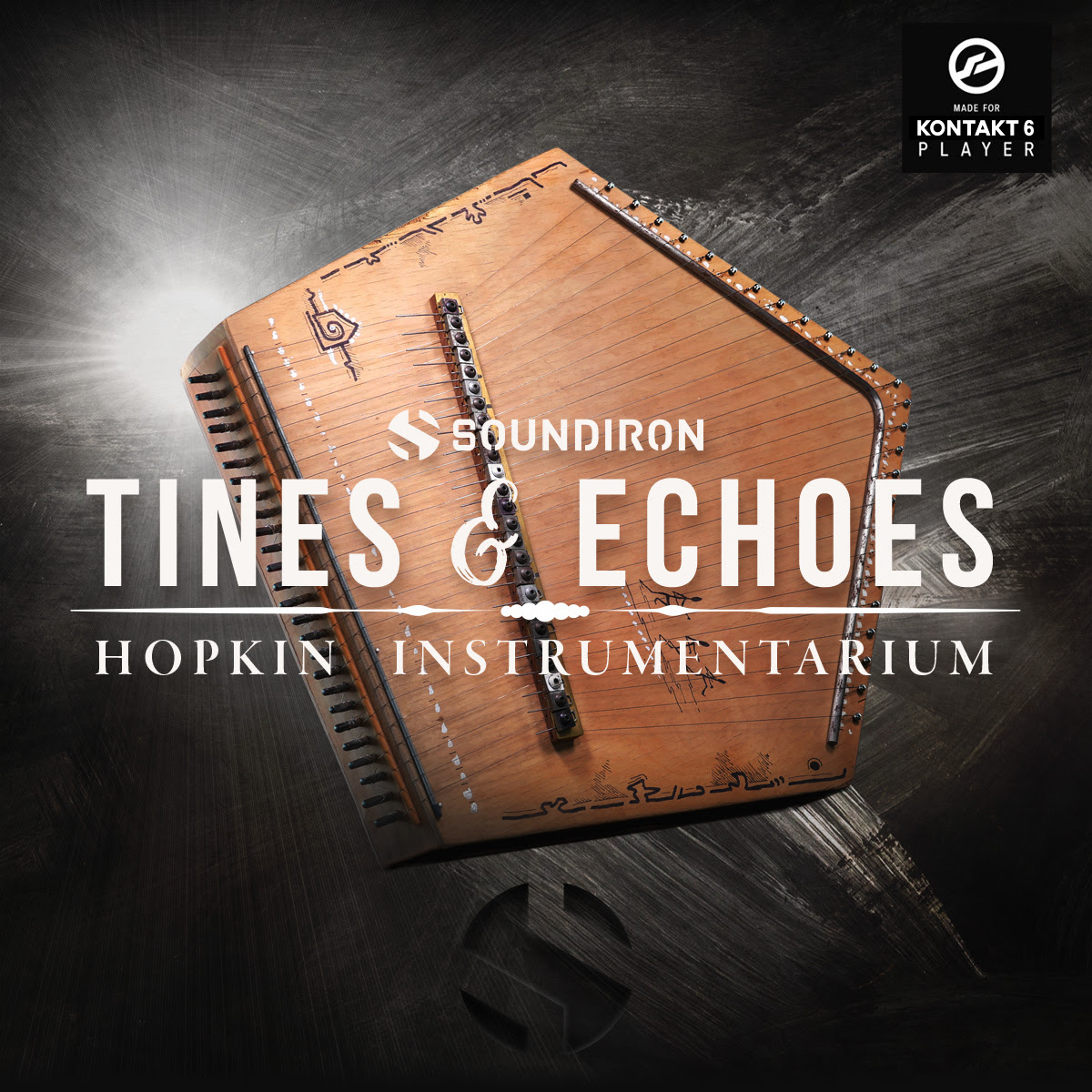Orchestral Dust by Channel Robot Review
Under Review today is Orchestral Dust by Channel Robot. This new Kontakt library Orchestral Dust is a dual voice ROMpler producing orchestral pads and under-score sounds. Orchestral Dust includes a total of twelve multisampled orchestral instruments sounds, each with its own set of articulations and ensemble sizes.
After a few minutes with Orchestral Dust, it became clear that this was a very musical and flexible type of library, so much so I have been using it for all manner of underscore and more.
While preparing the orchestral dust review I did look into the orchestral style pads, granular synthesis, evolving sounds, and different instruments.
The interface is clean and simple to use but opens up many options like the selection of two separate sets of tuned/untuned pairs (for layering), a simple but effective FX section, and an arpeggiator.
Perfect for when you want to add a more natural feel to your compositions, making the instruments blend in with each other rather than stand out.
Channel Robot develops a range of software products for Producers, DJs, Musicians and Sample Library Owners. For Producers, DJs, and Musicians Channel Robot makes virtual instruments, normally as VST plug-ins. Channel Robot did send a review copy with no strings attached.
These mostly come with sample libraries as their sound sources. Channel Robot practice on virtual instruments is oftentimes different and always relevant and exciting. See also our Folio Bass 1.1 by Channel Robot Review
Installation
You need to authorize the library after purchase and save the library after you enter the authorization code. The library requires the paid version of Kontakt 5.8.1 (Not the free Kontakt Player). There are snapshots included, you need to copy them into the normal snapshot folder for your Kontakt sampler.
 Orchestral Dust by Channel Robot Authorization starting
Orchestral Dust by Channel Robot Authorization starting
Sound – orchestral dust review
Orchestral Dust uses the latest version of their innovative granular engine called AGRA. With this engine, you can produce sounds utilizing granular synthesis to deliver amazing absolutely distinctive, and novel orchestral pads and under-score sounds.
To generate these pads 12 distinct sampled orchestral instruments using different articulations and ensemble sizes. You can select in the library these different instruments and the articulation that matches fully your demands.
 Orchestral Dust by Channel Robot Gate Tab
Orchestral Dust by Channel Robot Gate Tab
Multi Sampled Orchestral Instruments
Instruments recorded and samples and part of the Kontakt Sampler are Bassoon, Cello, Clarinet, Contra Bass, Flute, French Horn, Oboe, Trombone, Trumpet, Tuba, Viola, and Violin.
Most with a large ensemble, small ensemble & solo, and their particular articulations. In total above 1600 audio files have been used as source material for the Orchestral Dust granular engine.
The sound this library produces reminds me of a mixture between a phrase library and texture/pad engine, several resulting sounds do speak to me and can be used.
Since Orchestral Dust is a Kontakt library, you can use the library with other plug-ins or software for controlling and triggering, etc. You can assign keys to your MIDI keyboard to play it like an instrument.
I did also assign the fade control, and mix control to have that immediate availability when playing.
You may control the grain playback for each voice using Orchestral Dust. You can choose gain (volume), the file position and pitch of each particle, as well as any custom loops you create.
This is a new, unique technique that may be used to create sounds utilizing granular synthesis to generating sounds and produce some truly unusual and distinct sounds.
Classic Granular Engine Controls
There are also classic granular engine controls like grain size, position, and playback speed. You can also add FX to the sound, like delay, reverb, and distortion.
When I discovered a very odd one I just continue experimenting as it did not fit what I was after at the time. To make up your mind if this is a library for you should listen to their included run through in this article.
Orchestral Underscore Instruments & Pad Instruments
Orchestral Dust contains both Orchestral Underscore Instruments & Pad Instruments
The library is split up into two separate sections, one dealing with an orchestral underscore and the other dealing with pads. Orchestral Underscore contains small sections of music, almost like a musical stutter. These are very useful for adding tension to your composition without resorting to using drums or having to program these yourself.
User interface & Usability
Using Orchestral Dust is straightforward. You select the instrument and articulation for each voice at the top or alternative start with a preset. Next, you start experimenting with the pad by changing the different Filter, gates, and steps.
 Orchestral Dust by Channel Robot Main UI
Orchestral Dust by Channel Robot Main UI
The UI is easy to use, the developer Orchestral Dust made several synthesis controls, like Attack, Release, and filters, and in addition further tools available to shape the sound.
The Ui also grants you access to effects tracks and gates. You can use up to four send effects racks, four convolution spaces for each voice, Overhead, Room, Studio, and Hall.
 Orchestral Dust by Channel Robot Effect Tab
Orchestral Dust by Channel Robot Effect Tab
Unique Evolving Lively Sounds
Performing the Velocity of the Grain will cause the sound to become more lively and evolving, if needed you can also lower it.
Creating your own loops is easy with Orchestral Dust than note-based libraries. You can actually create some very unique sounds that evolve quite nicely for this library.
Uniquely Creative Dual Voice ROMpler With Granular Twist!
This library of the Kontakt sampler is a collection of a wide range of instruments that have been recorded from real players from around the world.
In total there are over 1600 audio files sourced from the library. This library has been created using granular sound effects and can be used for producing some very unusual and distinctive sounds.
The user interface of Orchestral Dust is intuitive and easy to use, with features such as velocity that can be controlled in order to create a more expressive sound.
Rating: Four out of five stars
Orchestral Dust is a beast to create unique evolving lively sounds for your orchestral underscore. Some sounds did remind me of certain blockbusters which only speaks to the quality of results this library can produce.
It’s a very good interface to control your sound. With the right effects and tweaking of knobs, you can create an unlimited amount of sounds from organic, sci-fi, surreal, weird, wonderful! Orchestral Dust is a wild ride with endless opportunities. But what really sets it apart is the innovative review of handpan instrument that can be accessed through the interface. The detailed control over the handpan’s different tones and pitches adds a whole new dimension to the music you can create. This feature alone makes Orchestral Dust a must-have for any musician or sound designer looking to push the boundaries of traditional sound.
The mad scientists of Orchestral Dust have incorporated AGRA, the company’s newest granular engine, into their program. You may create sounds using granular synthesis to provide astounding completely new and unique orchestral pads and under-score noises with this engine.










